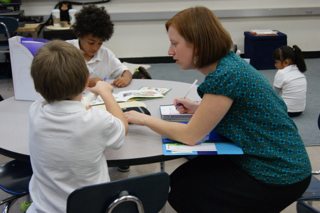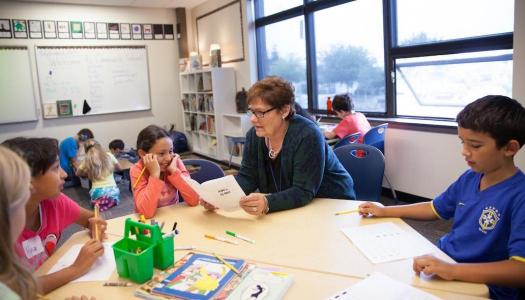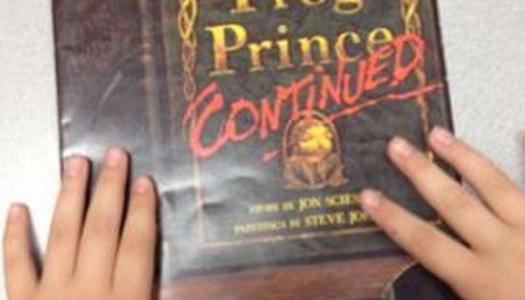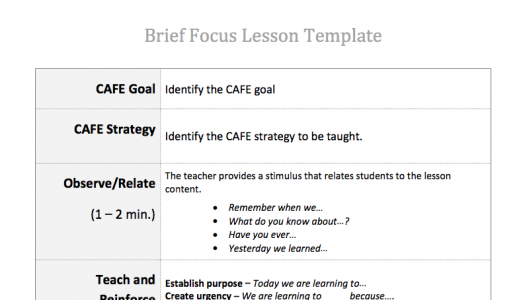Determining a Conference Focus Improves Instruction and Learning
Join Our Community
Access this resource now. Get up to three resources every month for free.
Choose from thousands of articles, lessons, guides, videos, and printables.

One of the biggest shifts we made when endeavoring to improve our reading instruction was to get up, move into the room, and start conferring with children one-on-one. We were accustomed to staying in one place and calling small groups of children over to us for guided reading lessons. Getting up and moving to confer with students after finishing with a small group was a little scary at first. The first concern we had was how long each conference should take. We also wondered what to focus on, since each child had multiple needs that we might address. Practicing and refining our conferring process has made this part of our teaching day not only the most powerful, but the most enjoyable.
To determine a focus, we decide on a goal and strategy based on the needs that emerge as we administer assessments. We transfer them to the children's conferring pages and they declare their goals by putting their names under the CAFE headers that apply. Each conference begins with this initial lens and is adjusted as the student progresses.
Having a preset focus eliminated our need to rely on more formal conferring forms with prepared questions. These always made our conferences last too long and included interview-type questions that weren't necessary for accelerating student growth. Listening, guiding, and in-the-moment coaching around strategies that will help children achieve their goals has become the true heart of each conference. We typically zero in on one thing at a time, taking notes of additional needs for possible next-steps instruction.
Because our conferences are focused and intentional, they are also brief. This lets us meet with more students in a day and meet with each student more frequently.
One other important aspect of conferring with children is to develop a shared language around reading development. The language we use with students shapes their thinking about what reading is. Instead of saying their goal is to read chapter books or to get to the next level in a reading incentive program, we help them become comfortable with words such as comprehension, accuracy, fluency, and practice strategies that will help them become proficient readers.
Our main goal is to foster a love of reading—to help raise children who not only love to read, but choose to read and do so powerfully. One-on-one conferring has proven, year after year, to be the means of helping us achieve this goal.







